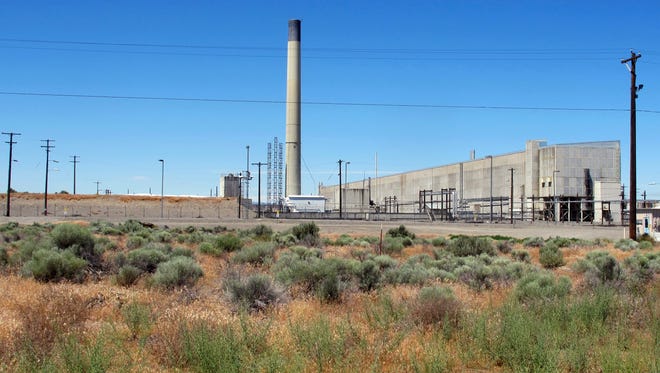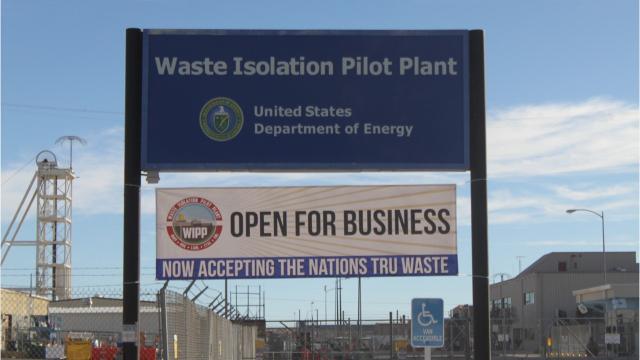Full disposal of nuclear waste from the U.S. Department of Energy’s Hanford Site in Benton County, Washington at the Waste Isolation Pilot Plant repository in Carlsbad, New Mexico could be delayed by 20 years following an accidental radiological release in 2014 at the WIPP site.
Hanford Site, a 580-square-mile location in southeastern Washington was created in 1943 as part of the Manhattan Project to produce plutonium for nuclear weapons.
Most of the reactors were decommissioned by the 1970s and today its main mission is environmental remediation and protecting the nearby Columbia River, along with some ongoing research.
More:WIPP: Electric vehicles coming to nuclear waste repository, intended to improve airflow
Following the incident in 2014, which led to a three-year shutdown of WIPP’s primary operations, waste shipments from Hanford to WIPP were paused and were still yet to be resumed after WIPP reopened and began receiving and emplacing waste in 2017.
Initially, the DOE planned to dispose of all of Hanford’s waste at WIPP by 2030.

A spokesperson from the Hanford Site said the revised deadline of 2050 was the result of negotiated changes to the facility’s “Tri-Party Agreement” between the DOE, Washington State Department of Ecology and the U.S. Environmental Protection Agency.
More:WIPP completes maintenance outage, intends to up shipments of nuclear waste post-pandemic
By 2028, the agreement called for the resumption of transuranic mixed (TRUM) waste from Hanford with 99 percent of Hanford’s TRUM waste being emplaced at WIPP by 2040.
TRUM waste is a combination of radioactive transuranic (TRU) waste – clothing materials and equipment radiated during nuclear operations – and non-radioactive hazardous waste such as environmental pollutants or other chemicals.
About 17,500 waste containers were to be retrieved from underground storage at Hanford to determine if they contain TRUM waste and will be characterized and treated if needed to meet the criteria for disposal at WIPP.
More:Amid legal battles over WIPP air system rebuild, new contract awarded to finish the work
About 11,000 such containers were already retrieved and are awaiting characterization, records show.
Further delaying waste disposal from Hanford, DOE officials focused on resuming contact-handled, or lower level waste shipments in 2017.
About 96 percent of all the waste coming to WIPP was expected to be contact-handled, meaning the decision to focus on those waste streams would have a “greater overall impact” across the DOE complex, said Phillip Guerrero, a spokesman for the DOE’s Carlsbad Field Office.
More:WIPP: Restart of ventilation fan needed for worker safety at nuclear repository
But much of the waste coming from Hanford was classified as having higher levels of radiation and thus deemed to be remote-handled, making the 2030 deadline for disposing of the site’s waste “not feasible,” per a fact sheet released by Hanford Site.
“Discussions are ongoing about when the resumption of remote-handled shipments will resume on a regular basis,” Guerrero said.
He said WIPP had received some remote-handled waste since the resuming operations, using shielded container and shipped in smaller numbers.
More:‘Sparking’ nuclear waste drum at Los Alamos National Lab leads to evacuation at WIPP
Since it first opened in 1999, WIPP received 775 remote-handled shipments or about 6 percent of the 12,877 shipments received in the facility’s lifetime.
Hanford does not have any waste in either category, Guerrero said, that was ready to be sent to WIPP and thus it would not be able to meet the 2030 deadline.
“WIPP’s mission is to dispose of the nation’s TRU waste generated from atomic energy defense activities. Waste is shipped from generator sites as it becomes characterized and certified for shipment.,” he said.
“Currently, Hanford does not have TRU waste that is ready to be shipped and disposed at WIPP.”
More:DOE planning to increase down-blended plutonium shipments to Waste Isolation Pilot Plant
The revised schedule, which meant multiple other milestones leading up to full disposal were adjusted, was submitted for public comment and under review by the three government agencies.
The public comment period was scheduled from April 26 to June 14, with a virtual public hearing held in May.
“More than 20 milestones to occur over the next three decades establish an achievable schedule for safely managing and disposing of Hanford’s mixed-low level and transuranic mixed waste,” read a statement from the Hanford Site.
“After the public comment period, the agencies will consider the comments and revise the milestone change forms as appropriate.”
More:WIPP: Hearing planned for new utility shaft amid fears it could extend nuke waste disposal
The radiation release in 2014 also delayed disposal of TRU waste from Los Alamos National Laboratory and Idaho National Laboratory, both under agreements with the host states.
Guerrero said the DOE is using an “extended planning timeframe” to 2050, as the federal government expects TRU waste to continue to be generated in the future.
“However, it is important to note that progress is once again being made to complete both of these agreements,” he said of the Idaho and Los Alamos waste.
“DOE is using an extended WIPP operational timeframe to 2050 as a planning basis only, in recognition of the fact that transuranic waste will continue to be generated decades into the future.”
Adrian Hedden can be reached at 575-618-7631, achedden@currentargus.com or @AdrianHedden on Twitter.







